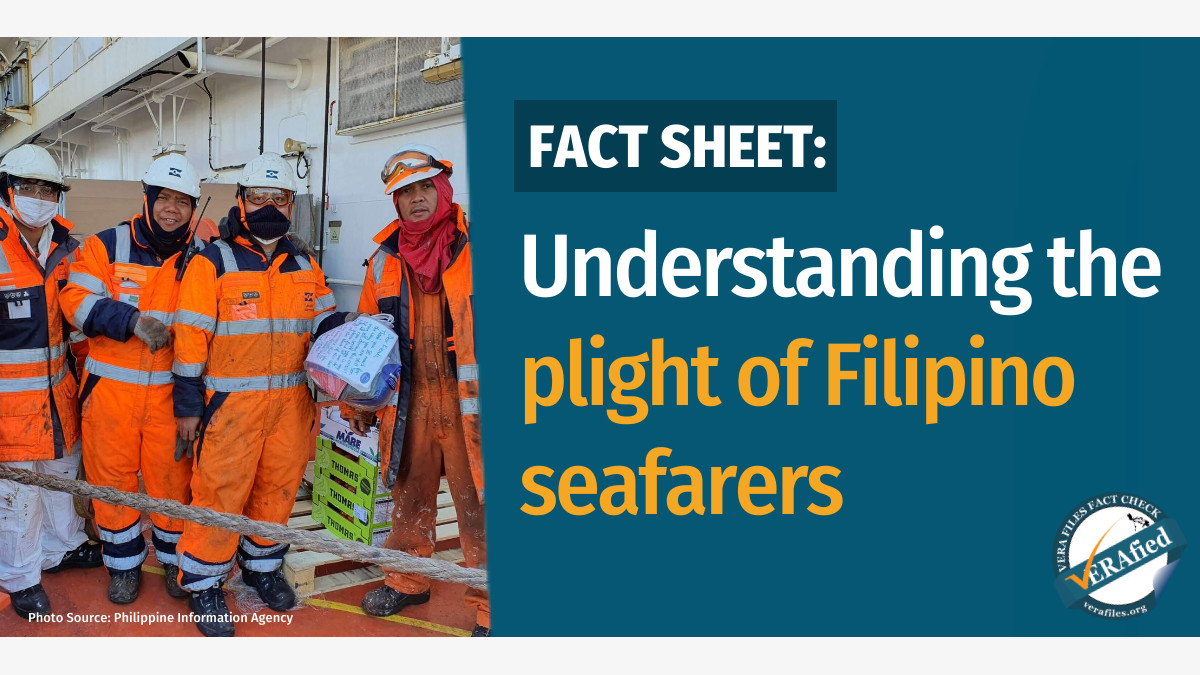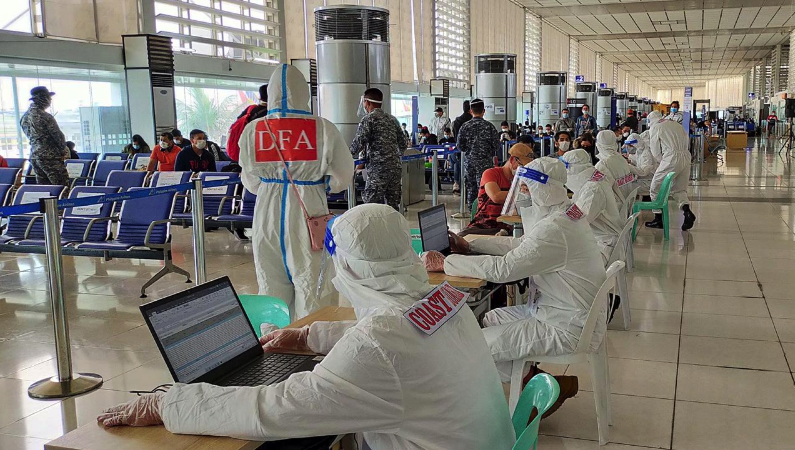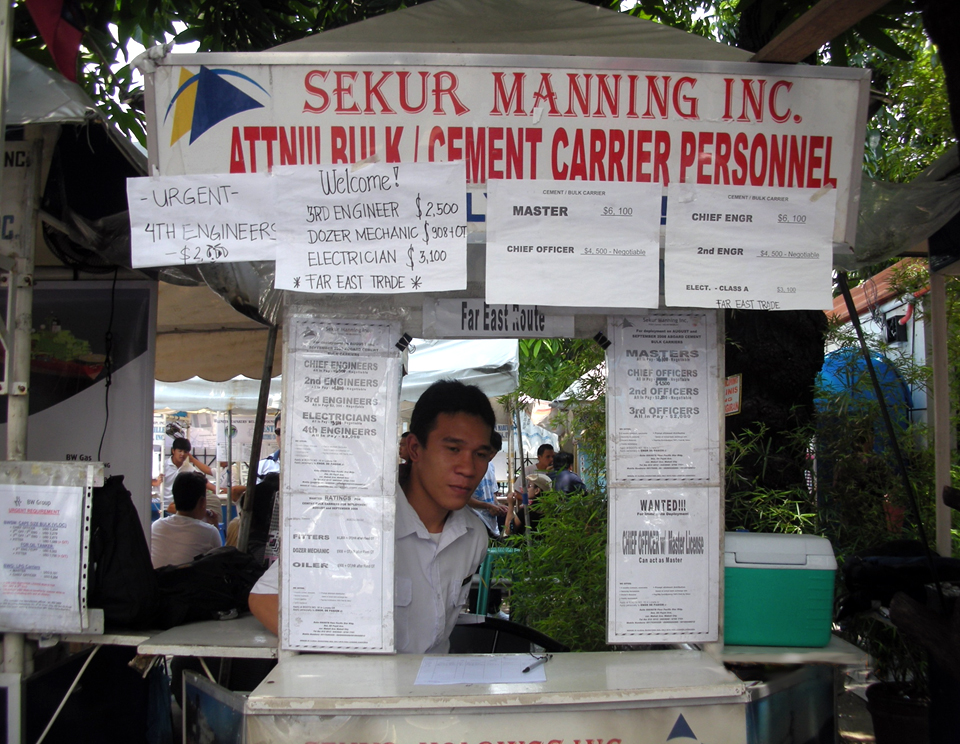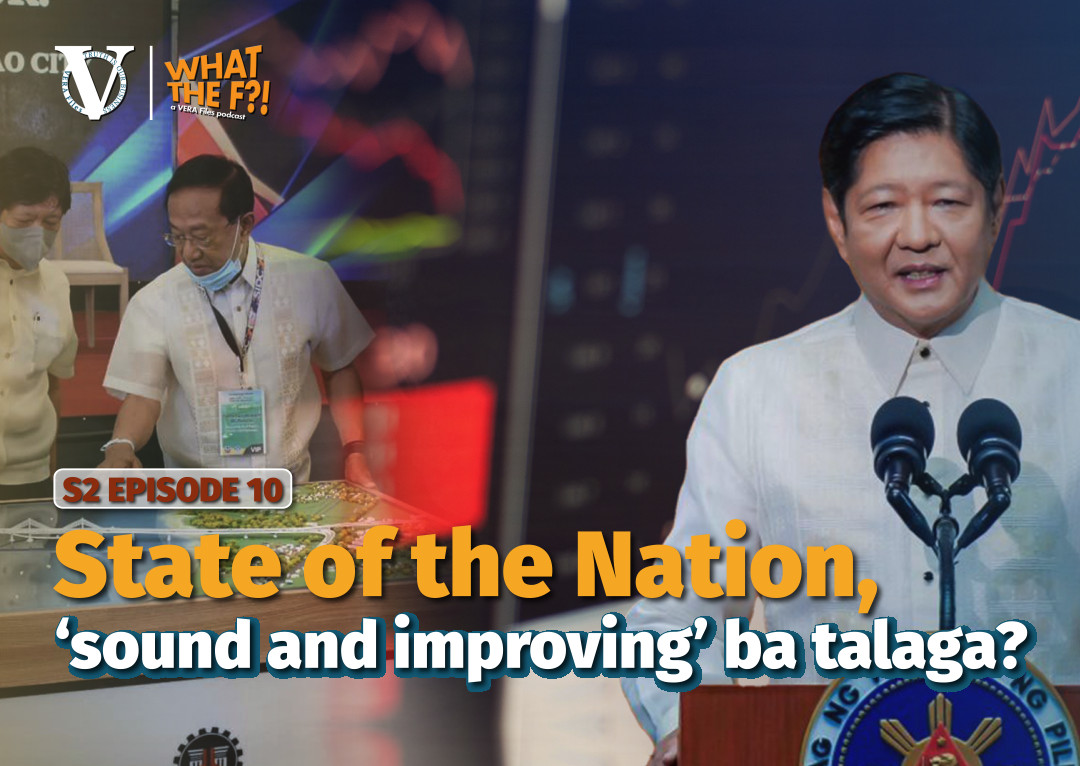President Ferdinand Marcos Jr. vowed in his second State of the Nation Address on July 24 to provide foreign merchant marine vessels a steady supply of competent Filipino seafarers.
Through the years, the Philippines has been among the top suppliers of seafarers in the global market. The country has been deploying over 400,000 seafarers every year from 2017, and this peaked at 507,730 in 2019.
But at the height of the COVID-19 pandemic in 2020, there was a 57% shortfall in the country’s seafarer deployment, with only 217,000 sent out for duty, according to a report from the Maritime Industry Authority (MARINA). Nevertheless, the country continued to take the top spot in the global seafaring market in 2021, beating Russia, Indonesia, China and India.
The deployment of Filipino seafarers has not always been smooth-sailing. In 2022, they faced a potential ban from working on European vessels.
This came after a 2020 European Maritime Safety Agency (EMSA) audit found that the country was non-compliant with the International Convention on Standards of Training, Certification and Watchkeeping for Seafarers (ISTCW), that sets the “minimum standards relating to training, certification and watchkeeping for seafarers which countries are obliged to meet or exceed.”
The country has failed to meet such standards in the past 17 years.
For this reason, the European Commission (EC) – the European Union’s (EU) politically independent executive arm – told the government in 2021 that it would withdraw recognition of Philippine-issued seafarers’ certificates “unless serious measures,” including compliance with the ISTCW, were taken.
In his SONA, the president said the problem has “finally been resolved” and the country “now effectively maintains the Filipino seafarers’ distinct competitive advantage in the global shipping labor market.”
What was the root cause of this problem and what other concerns do maritime higher education institutions (MHEIs) in the country face? How many seafarers were affected before the EC dropped its potential ban on Filipino seafarers? Here are three things you need to know:
1. What problems are confronting MHEIs?
The problems of MHEIs go beyond course delivery. The EU Philippine Delegation – the official representatives of the EU in the Philippines – noted that “inconsistencies have been identified in relation to the competencies covered by the education and training programs leading to the issuing of officers’ certificates, as well as in several approved programs regarding teaching and examination methods, facilities and equipment,” according to news reports.
In 2017, a study of maritime faculty surveyed by the National Maritime Polytechnic (NMP) identified the following pressing challenges of MHEIs:
- Misalignment of the syllabus and exercises to the intended learning, program and course outcomes
- Overwhelming intended learning outcomes for a certain course timeframe
- Equipment and facilities are not updated to meet ISTCW standards, and are not proportional to the number of students
- Shortage or unavailability of books and learning materials
- Intermittent internet connection in schools
- Overcrowded classrooms
- Shortage of “qualified” maritime faculty due to fast turnover
- No incentives for faculty who develop and design exercises simulator exercises
- Lack of funding by MHEIs in upskilling maritime faculty
- Unharmonized policies and guidelines between the Commission on Higher Education (CHED) and MARINA.
Program completion rates and shipboard employment rates also remain low, according to a 2020 study on governance of MHEIs. Graduates of Philippine MHEIs in the 2017 – 2018 school year fell below 50% across 13 regions in the country. The lowest graduation rate during that academic year was recorded in Metro Manila, where only 7% or 933 students graduated out of 13,550 enrollees.
2. What steps are taken by the Philippine government to address these?
MARINA outlined 19 steps the country is taking to address concerns of the EC, seven of which were reported as “completed activities.” Other efforts are ongoing, specifically on the development of teaching syllabi and assessment of course learning outcomes of students in MHEIs.
Most of the government’s completed activities hinged on MARINA and the CHED’s issuance on March 7, 2022 of a revised policy, standards and guidelines for Bachelor of Science programs in Marine Transportation (BSMT) and Marine Engineering (BSMarE).
This prescribed a minimum of 175 and 179 credit units, respectively, that students must pass in each of the degree programs. This is apart from the 40 credit units that students must receive once they have accomplished their on-board training.
The same guidelines required MHEIs to offer at least two out of 10 recommended elective courses outlined for the two degree programs.
The Marcos administration further revised these guidelines in February 2023. While it trimmed the minimum number of units to 165 and 176 for BSMT and BSMarE, respectively, it clarified that BSMarE students should complete 436 hours of workshop skills training spread across seven BSMarE courses.
This means that BSMarE students would have four laboratory hours in each of the 16 weeks in a semester.
Likewise, both guidelines clarified that full-time faculty members should have a maximum load of 30 contact hours per week.
On top of this, both CHED and MARINA are set to release an “enhanced curriculum” for maritime schools, alongside upskilling and retraining maritime faculty, CHED Chairperson Prospero De Vera said.
Earlier this year, CHED issued a five-year moratorium on new maritime programs so the agency could evaluate the existing programs in the country’s accredited MHEIs, which Marcos had ordered to be completed in two years.
3. What would be the impact on the maritime industry if the Philippines had failed to comply with international standards on seafarers’ education?
Around 50,000 Filipino seafarers working on European vessels would have been put at risk had the Philippines not shown “serious efforts” to comply with the EC’s requirements on monitoring, supervision and evaluation of training and assessment. In the EU alone, the Philippines has consistently taken the top spot for non-EU holders of certificates of competency since 2017.
| Year | Number of certificates of competency holders |
| 2017 | 30,615 |
| 2018 | 39,145 |
| 2019 | 46,114 |
| 2020 | 49,461 |
| 2021 | 47,313 |
Source: EMSA, Seafarer Statistics in the EU (Statistical Review 2017 – 2021), Accessed on Aug. 8, 2023
Filipino seafarers’ roles in ships are not limited to navigation, machine operation and maintenance of cargo and tourism vessels. They also take on roles in maintenance of the quarters, and cooking and hospitality in both types of ships.
Moreover, seafarers’ dollar remittance make up at least 1.6% of the country’s annual gross domestic product (GDP) since 2017. In 2022, seafarers remitted $6.71 billion, which accounted for 1.66% of the country’s $404.28 billion GDP that year.
| Year | Seafarers remittance | GDP | % of GDP |
| 2017 | 5,870,827 | 328,480,000 | 1.79% |
| 2018 | 6,139,512 | 346,840,000 | 1.77% |
| 2019 | 6,539,246 | 376,820,000 | 1.74% |
| 2020 | 6,353,522 | 361,750,000 | 1.76% |
| 2021 | 6,545,002 | 394,090,000 | 1.66% |
| 2022 | 6,715,880 | 404,280,000 | 1.66% |
Source: World Bank, GDP – Philippines, accessed on Aug. 8, 2023; Bangko Sentral ng Pilipinas, Overseas Filipinos’ Remittances (Historical), Accessed on Aug. 8, 2023
The Bangko Sentral ng Pilipinas (BSP) notes that Overseas Filipino Workers’ remittances “serve as a catalyst for economic activity.” It provides both a stable source of income for personal households and a stable source for the country’s foreign currency reserves, which the BSP manages to maintain the Philippine peso’s international stability.






